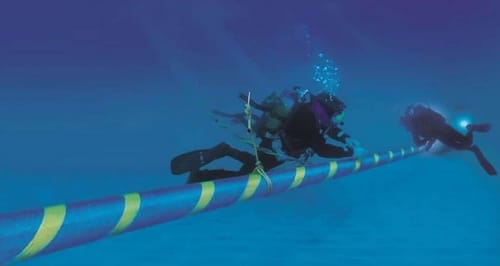 |
| How Google's huge submarine cables detect earthquakes before they happen? |
Google's fiber-optic cable - in last year's test - could transmit data around the world by detecting the distortion of light pulses sent along the cable and successfully capturing nearby seismic signals that will track earthquakes and tsunamis that could one day be used. . It is all over the world.
Are there details?
A recent study showed that by converting submarine cables into geophysical sensors, a network of submarine cables carrying data around the world could one day be used to track earthquakes and tsunamis. According to Zhongwen Zhan, an associate professor of geophysics at the institute, this was published in Science last Friday.
According to search results. In addition to their primary function of sending data around the world, these cables can also send alerts to people on the beach when a tsunami hits the beach, as these cables can help seismologists and geophysicists understand closely. An earthquake is an event. He arrived under the water.
And since all the sensors currently used to detect earthquakes are located above the ground, these cables can help scientists monitor seismic activity because this new method does not even require the installation of new equipment on the existing network and this new equipment can be expanded beyond optical fiber cables on Earth for a million kilometers. Oceans around the world.
This new method takes full advantage of cable design. When the transmitter at one end of the cable sends optical signals to transmit data, these light waves travel in a specific direction, then this happens during an earthquake. In a certain area, the cable can vibrate, bend or warp, changing the direction of the light waves. Google notices and corrects the distortion on the other end of the cable.
If you share this data distortion in cables with Google, then this question could help scientists by studying earthquakes that cause distortions or polarization shows that the research team recently discovered using this method in cooperation with Google.
Between December 2019 and September 2020; Professor Zhan Zhongwen's research team used a 10,500 km submarine cable from Los Angeles to Valparaiso in Chile to record nearly 20 moderate to severe earthquakes. Additionally, the cable can also detect long waves in the ocean during storms, which indicates that the technology can also be used to detect tsunamis that earthquakes can cause.
Google wrote on a blog, “This new method allows people to see a tsunami while at sea, which saves lives. In addition to better monitoring the ocean thanks to some sensors dedicated to tsunami research, fiber optic cables can also be used to send alerts to the area faster in Fractions of a second.
It should be noted that similar studies published in 2018 showed that underwater data transmission cables can detect earthquakes and tsunamis. However, this method has some limitations, as the cables must be equipped with special devices that detect earthquakes and tsunamis. A laser beam is emitted through the cable.
This poses a problem because adding additional hardware to the cable can open the door to security holes and allow hackers to access data sent over the network. This new method could save money and the scientists couldn't see the transmission. Content information. Research terms (polarization of light).
